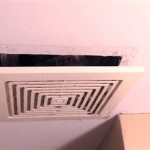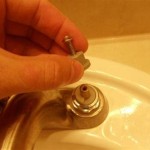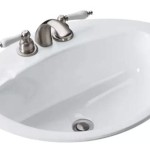What Causes Black Mold In Bathroom Sink Drain?
Black mold, scientifically known as Stachybotrys chartarum, is a type of fungus that thrives in damp and humid environments, making bathrooms a prime location for its growth. Sink drains, in particular, can become breeding grounds for black mold due to their constant exposure to moisture and organic matter. Understanding the factors that contribute to black mold formation in bathroom sink drains is crucial for preventing its growth and ensuring a healthy home environment.
Moisture and Humidity
The primary factor driving black mold growth in bathroom sink drains is the presence of persistent moisture and humidity. Sink drains are constantly exposed to water, particularly when used for washing hands, brushing teeth, and other daily activities. When water pools in the drain, it creates an ideal environment for mold spores to germinate and proliferate. Additionally, the steam generated by showers and baths can elevate humidity levels in the bathroom, further supporting mold growth.
The presence of even small amounts of water can be enough to initiate mold growth. For example, if a leaky faucet or pipe allows water to drip continuously into the drain, it can create a persistent source of moisture, encouraging mold development. Even if the leak is minor, it can contribute to the build-up of moisture and support the growth of black mold. Insufficient ventilation in the bathroom can also exacerbate the issue by trapping moisture and preventing it from evaporating, further promoting mold growth.
Organic Matter
Another key factor contributing to black mold in bathroom sink drains is the presence of organic matter. Organic matter serves as a food source for mold spores, providing them with the nutrients needed for growth and reproduction. Hair, toothpaste, soap scum, and other residues accumulate in the drain, creating a rich source of organic matter that mold can feed on. This organic matter, combined with moisture, creates a perfect environment for mold spores to germinate and establish colonies.
The frequency and type of organic matter accumulation can vary significantly. For instance, a sink drain used by multiple individuals or for activities involving a lot of hair shedding will likely accumulate more organic matter than a drain used by a single person. Similarly, the type of cleaning products used in the bathroom can also influence the quantity and type of organic matter available for mold to consume. It is essential to regularly clean and maintain bathroom sink drains to minimize the accumulation of organic matter and reduce the risk of mold growth.
Improper Ventilation
Proper ventilation plays a crucial role in controlling moisture levels and reducing the risk of black mold growth in bathroom sink drains. Inadequate ventilation can lead to the build-up of moisture and steam, creating a conducive environment for mold proliferation. When the bathroom is poorly ventilated, the moisture generated by showers and baths can linger in the air, settling on surfaces and contributing to mold growth.
Ventilation systems, such as exhaust fans, help to remove excess moisture and humidity from the bathroom, preventing the build-up of conditions that favor mold growth. Regular exhaust fan use during and after showers and baths is essential for maintaining a healthy environment and reducing the risk of mold formation. It is also important to ensure that the exhaust fan is properly functioning and vented to the exterior of the building, allowing the moisture-laden air to be expelled effectively.
Other Factors
Other factors that can contribute to black mold growth in bathroom sink drains include:
- Temperature: Mold spores thrive in warm, humid environments. Temperatures between 77-86°F (25-30°C) are ideal for mold growth.
- Water Hardness: Hard water contains high levels of minerals, such as calcium and magnesium. These minerals can accumulate in the drain, creating a rough surface that can trap moisture and organic matter, further contributing to mold growth.
- Age of Drain: Older drains may have cracks or corrosion that can trap moisture and provide a breeding ground for mold.
By understanding the factors that contribute to black mold formation in bathroom sink drains, individuals can take preventative measures to reduce the risk of its growth. Regular cleaning and maintenance of drains, ensuring proper ventilation, and addressing any leaks or water damage are crucial steps in maintaining a healthy and mold-free bathroom environment.

What Causes Black Mold In Sink Drains How To Get Rid Of It

How To Clear The Black Slime From Your Bathroom Sink

5 Signs That You Have Mold Growing In Your Sink Drain

What Causes Black Mold In Sink Drains How To Remove It

Tips To Prevent Mold Growth In Common Plumbing Areas Around Your Home

How To Remove Black Mold In Sink Drains Effectively
Prevent Drain Buildup In Your Bathroom Here S How

Plumbing Expert Shares How To Unblock A Sink Using Household Items Without Plunger Express Co

Signs That You Have Mold In Your Water Pipes

Is Black Mould In The Bathroom Dangerous Dbs Bathrooms
Related Posts







